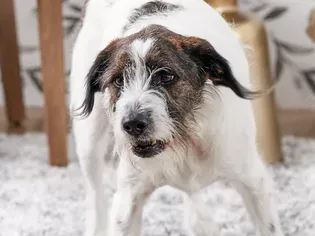How to Stop Your Dog from Growling
Updated on 05/27/24

Mastering the Art of Calming Your Growling Canine: A Comprehensive Guide
Growling is a natural canine behavior that can be both a warning and a sign of fear or discomfort. While it's essential to acknowledge the reasons behind your dog's growling, it's equally crucial to address this behavior effectively to ensure a harmonious coexistence.
In this comprehensive guide, we will delve into the intricacies of canine growling, exploring its underlying causes and uncovering practical strategies to help you stop your dog from growling. We will provide you with a step-by-step process, real-life examples, and valuable insights to empower you in resolving this issue.
Understanding the Root of Growling: Identifying the Triggers
Before embarking on the journey of stopping your dog's growling, it's paramount to comprehend the underlying reasons that trigger this behavior. By identifying the specific situations or stimuli that prompt your dog to growl, you can tailor your approach and effectively address the root cause.
Common triggers for canine growling include:
* Fear or Anxiety: Growling can be a manifestation of fear or anxiety towards unfamiliar people, objects, or situations.
* Example: A dog that growls when a stranger approaches may be displaying a fear response to the perceived threat.
* Protection: Dogs may growl to protect their territory, food, toys, or loved ones.
* Example: A dog that growls when another animal or person comes near its food bowl may be exhibiting protective behavior.
* Pain or Discomfort: If your dog is experiencing pain or discomfort due to illness, injury, or other health issues, it may growl when touched or approached.
* Example: A dog that growls when you try to pet its injured leg may be reacting to the pain it's experiencing.
* Dominance or Aggression: Growling can be a sign of dominance or aggression in some dogs, particularly those with a history of resource guarding or territorial issues.
* Example: A dog that growls when you try to move it from its favorite spot on the couch may be asserting its dominance or guarding its territory.
Understanding the triggers for your dog's growling is a crucial step in developing an effective plan to stop this behavior.
A Step-by-Step Approach: Transforming Growling into Calm Behavior
Now that you have identified the triggers that prompt your dog's growling, it's time to embark on a step-by-step approach to transform this behavior into calm and appropriate responses.
Step 1: Create a Safe and Comfortable Environment
Establish a safe and comfortable environment for your dog by removing or managing triggers that evoke growling. This may involve:
* Keeping strangers or unfamiliar animals away from your dog.
* Providing a quiet and secluded space where your dog can retreat to when feeling overwhelmed.
* Ensuring your dog has access to its food, water, and toys without any perceived threats.
Step 2: Positive Reinforcement and Desensitization
Use positive reinforcement and desensitization techniques to gradually expose your dog to the triggers that trigger growling.
* Start by presenting the trigger at a distance where your dog remains calm and relaxed.
* Gradually decrease the distance as your dog becomes more comfortable.
* Reward your dog with treats, praise, or play whenever they remain calm in the presence of the trigger.
Step 3: Counter-Conditioning
Pair the trigger with something your dog enjoys, such as treats or play.
* For example, if your dog growls when strangers approach, begin by having a stranger stand at a distance while you give your dog treats.
* Gradually decrease the distance while continuing to reward your dog for remaining calm.
Step 4: Practice and Consistency
Practice these techniques consistently in various situations to help your dog generalize its calm behavior to different environments and triggers.
Step 5: Seek Professional Help if Needed
If you are struggling to stop your dog's growling on your own, do not hesitate to seek professional help from a veterinarian or certified dog trainer. They can provide personalized guidance and support to address your dog's specific needs.
Real-Life Examples: Success Stories in Overcoming Growling
To further illustrate the effectiveness of these strategies, here are two real-life examples of dogs that overcame their growling issues:
* Example 1: A Labrador retriever named Max would growl when people approached his food bowl. After implementing positive reinforcement and desensitization techniques, Max learned to associate people approaching his food with something positive (treats). He gradually became less possessive and no longer growled when people came near his bowl.
* Example 2: A German shepherd named Luna would growl at strangers. Her owners implemented counter-conditioning by having strangers give Luna treats while keeping a safe distance. Over time, Luna began to associate strangers with something pleasant (treats) and stopped growling at them.
Conclusion: A Path to a Harmonious Relationship
By understanding the triggers that provoke growling, implementing a step-by-step approach, and seeking professional help when necessary, you can effectively stop your dog from growling and build a harmonious relationship based on trust and mutual understanding. Remember, patience, consistency, and positive reinforcement are key in this transformative journey.
Explore More Pets

Basic Training
Puppy and Baby Introductions

Working Dog Breeds
All About Search and Rescue Dogs

Dog Treatments
Puppy Vaginitis: Signs, Causes and Treatment

Dog Adoption
After More Than 1,200 Days in the Shelter, Coco Goes Home

Basic Training
How to Train Your Puppy to Go on Potty Pads

Hybrid Dog Breeds
The Difference Between a Mutt, Mixed Breed, or Designer Dog?

Dog Treatments
Nail Problems in Dogs

Puppies
7 Reasons Why Two Dogs Are Better Than One
